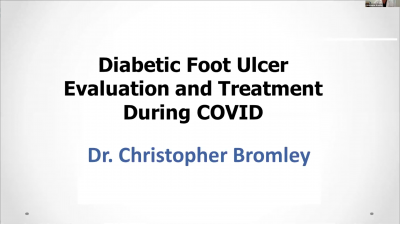
Practice Perfect 765
Effective Intervention for Smoking Cessation
Effective Intervention for Smoking Cessation

Today’s Practice Perfect is a guest editorial written by Lily Lin, DPM, PGY2, a resident at the Chino Valley Medical Center residency. During a recent academic discussion, the question of smoking cessation before surgery came up, and Dr Lin took the next step in her education. She researched the issue, and reports to us her well-researched results. Dr Lin’s thirst for knowledge is a good example for all of us looking to improve our understanding of medicine to help our patients.
Many of my patients smoke tobacco products, so I often find myself having conversations about tobacco smoking cessation. I have found it helpful to start the conversation by asking them why they smoke and proceed to ask if they have thought about quitting. While I am comfortable discussing the risks and benefits of smoking cessation, I don’t know what the literature says about the most successful treatments for smoking cessation or what it means for someone to be a successful quitter, so I did some research which I’d like to share with you.
For effective smoking cessation, a combination of behavioral interventions and pharmacotherapy is more effective than either one alone
In a recent meta-analysis published in Addiction, the U.S. Public Health Service Clinical Practice Guideline, and the U.S. Preventive Services Task Force all agree – a combination of behavioral interventions and pharmacotherapy for smoking cessation is more effective than either one alone.1-3 Behavioral interventions can include individual, group, or telephone counseling that usually involve several sessions (≥4) that range from 90 to 300 minutes. The current FDA approved pharmacotherapy for non-pregnant adults includes the following4:
- Nicotine replacement therapy (NRT) such as nicotine transdermal patches lozenges, gum, inhalers, or nasal spray
- Bupropion hydrochloride sustained release (SR) (ex Zyban®)
- Varenicline (ex Chantix®)
According to the current literature, varenicline is more effective than NRT or bupropion SR alone3 and using a combination of short-acting NRT with long-acting NRT is more effective than single form of NRT alone.3
Due to insufficient evidence on pharmacotherapy interventions for pregnant adults who use tobacco, the U.S. Preventive Services Task Force recommends that providers use behavioral interventions as the main treatment modality for these patients.4 Further, behavioral interventions are more effective when supplemented with self-help materials tailored to pregnant adults.1,3 For example, materials can include information on the effects of smoking on maternal and fetal health.
Beyond finding the most effective intervention for smoking cessation for adults, I wanted to know how to measure smoking cessation success. It was difficult to find an operational definition of a successful tobacco quitter, and the closest definition came from a study in the American Journal of Public Health: “Successful quitters were defined as those who had maintained their quit status for 7 to 24 months. Unsuccessful quitters were defined as those who had tried to quit for 1 day or more during the past year but relapsed before 7 months”.5
An interesting paper that caught my attention was a longitudinal study that looked at the prevalence and predictors of cigarette smoking relapse among adult former smokers in the United States. Some important considerations6:
- Prevalence and odds of relapse were higher among young people compared with elders.
- Former smokers living in smoke-free homes (SFHs) had 60% lower odds of relapse compared with those living in homes that allowed smoking inside.
- Regarding race/ethnicity, only Hispanics showed significantly higher odds of relapse compared with non-Hispanic white patients.
- The odds of relapse were higher among never married, widowed, divorced and separated individuals, compared with the married group.
- Continuous smoking cessation for 6 months or more significantly decreased the odds of relapse.
Bottom line, the combination of behavioral interventions with pharmacotherapy is the most effective treatment for tobacco dependent nonpregnant adults who want to quit smoking tobacco. It would also be helpful to understand the patient’s determinants of health, as well as the consistency of smoking cessation to determine the individual’s likelihood of tobacco smoking relapse.
Lily Lin, DPM, PGY2

-
Fiore MC, Jaén CR, Baker TB, et al. Treating tobacco use and dependence: 2008 update. Rockville, MD: US Department of Health and Human Services. 2008 May.
Follow this link -
Black N, Eisma MC, Viechtbauer W, et al. Variability and effectiveness of comparator group interventions in smoking cessation trials: a systematic review and meta‐analysis. Addiction. 2020 Sep;115(9):1607-1617.
Follow this link -
Patnode CD, Henderson JT, Melnikow J, Coppola EL, Durbin S, Thomas R. Interventions for tobacco cessation in adults, including pregnant women: an evidence update for the U.S. Preventive Services Task Force. 2021 Jan.
Follow this link -
Krist AH, Davidson KW, Mangione CM, et al. Interventions for tobacco smoking cessation in adults, including pregnant persons: US Preventive Services Task Force recommendation statement. Jama. 2021 Jan 19;325(3):265-279.
Follow this link -
Lee C-W, Kahende J. Factors associated with successful smoking cessation in the United States, 2000. Am J Pub Health. 2007 Aug;97(8):1503-1509.
Follow this link -
Alboksmaty A, Agaku IT, Odani S, Filippidis FT. Prevalence and determinants of cigarette smoking relapse among US adult smokers: a longitudinal study. BMJ Open. 2019 Nov 25;9(11):e031676.
Follow this link

































Comments
There are 0 comments for this article